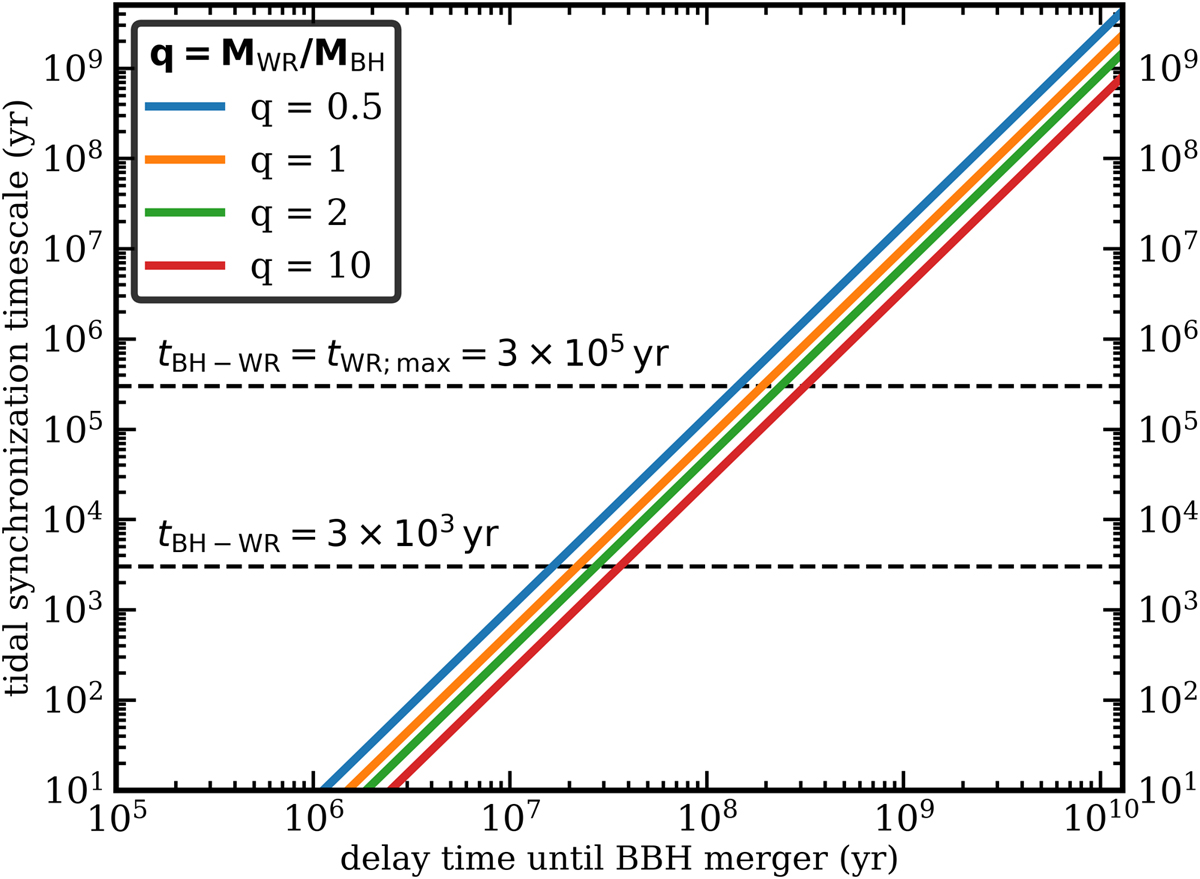Fig. 9.

Relation between the tidal synchronization timescale in a BH-WR binary and the delay time (between the formation and the merger) of the corresponding BBH system plotted for several different mass ratios q = MWR/MBH, using Eq. (14) from Kushnir et al. (2016). Tidal interactions can efficiently spin-up the WR star only if the synchronization timescale is shorter than the BH-WR binary lifetime tBH-WR. The two dashed horizontal lines mark two different values of tBH-WR: roughly the maximum WR lifetime ∼ 3 × 105 yr, assumed by several authors (e.g., Kushnir et al. 2016; Hotokezaka & Piran 2017a; Piran & Hotokezaka 2018), and a significantly smaller value tBH-WR = 3 × 103 yr which is more realistic in the case of the CE channel at low metallicity.
Current usage metrics show cumulative count of Article Views (full-text article views including HTML views, PDF and ePub downloads, according to the available data) and Abstracts Views on Vision4Press platform.
Data correspond to usage on the plateform after 2015. The current usage metrics is available 48-96 hours after online publication and is updated daily on week days.
Initial download of the metrics may take a while.


